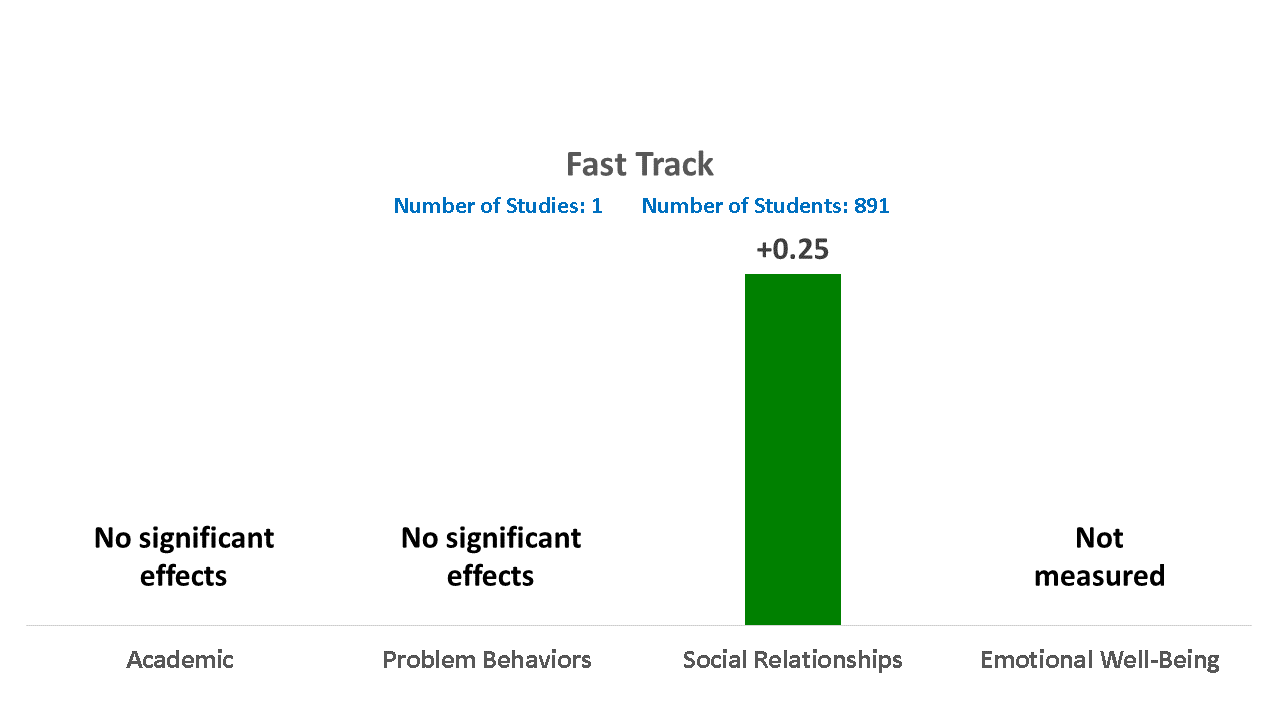
Program Description
Fast Track is a program directed primarily at young children at high risk for antisocial behavior. Children are identified as high risk by their kindergarten teachers, but the treatment is applied in first grade. In schools using Fast Track, all students receive an adaptation of the PATHS SEL approach, in lessons delivered 2-3 days each week. Selected students at high risk, the main focus of Fast Track, are then provided additional services. Parents of the at-risk children are offered parent group meetings, and the children receive social skills training and academic tutoring in weekly two-hour enrichment programs, provided after school or on weekends. Parents are paid to attend these sessions. The enrichment activities include discussions, modeling stories and videos, and role-plays in cooperative groups. The activities focus on emotional understanding, friendship building, self-control, and social problem solving. While children are engaged, parent sessions take place, focusing on parenting skills. Home visits were provided bi-weekly.
Program Outcomes
Bierman et al. (1999) carried out a large randomized evaluation of Fast Track. Although some services were provided to all first graders, the evaluation focused only on first graders who had been identified by their kindergarten teachers as being at high risk of anti-social behavior (n=891).
The study was a randomized experiment. 54 high-poverty schools located in four urban or rural districts across the U.S. were randomly assigned to receive Fast Track for a whole school year or to continue usual teaching. Overall, the sample was 69% male, 51% African American, and 47% White. 35% were identified as being in poverty, and 55% were in single-parent families. There were positive impacts on measures of empathy (ES=+0.29), meeting “Strong” evidence standards, and Interpersonal Relationships (ES=+0.21), meeting “Promising” evidence standards. No significant differences were found on academic performance or aggression/conduct.
Staffing Requirements
No additional staff needed
Professional Development/Training
Not described
Technology
None required
